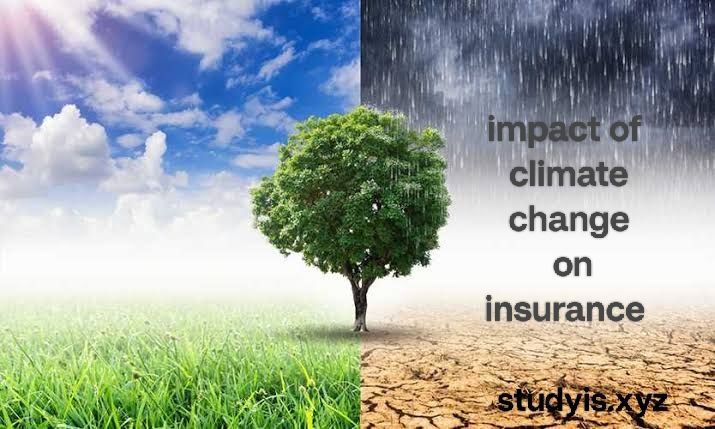
One of the most urgent global concerns of our time is climate change. Various facets of society are affected by the effects of global warming, which include rising sea levels, harsh weather, and changing climatic patterns. Insurance is one of the directly impacted industries that is vital in managing and reducing the financial risks brought on by climate change. The essay examines the significant effects of climate change on insurance and how the sector is addressing these issues.
Understanding the risks of climate change
Extreme weather phenomena: such as hurricanes, floods, wildfires, and droughts, are occurring more frequently and with greater severity as a result of climate change. These occurrences cause significant financial losses and property damage, which prompt insurance claims.
Rising Sea Levels: Infrastructure along the coast is seriously threatened by rising sea levels brought on by glaciers and ice caps that are melting. Because coastal areas are more susceptible to flooding and storm surges, there are more insurance claims for damage.
Changing Weather Patterns: Climate change has the potential to alter normal weather patterns, causing erratic temperature changes, unpredictable rainfall, and more frequent and powerful storms. The ability of insurers to effectively measure risk is hampered by these changes.
Effects on the Insurance Sector
Increased Payouts: As a result of the increasing frequency and severity of climate-related disasters, insurance payouts have gone up. Insurance companies have been compelled to give impacted policyholders bigger payouts as a result of climate-related disasters.
Risk Assessment Challenges: Due to climate change, traditional risk assessment models employed by insurers may become less accurate. It may be difficult for insurers to determine premiums that appropriately reflect risk because historical data may no longer be able to foresee future dangers.
Pressures on the reinsurance market: Climate change has also had an impact on reinsurance firms, which offer primary insurers coverage. They have thus increased their premiums, which has increased the burden on primary insurers and ultimately on policyholders.
Governments and regulatory agencies are putting more effort into reducing the effects of climate change and preparing for it. As a result, there are now more rules and reporting requirements for insurance businesses, which raises the cost of compliance.
Strategies and Adaptations
Advanced risk modeling and data analytics: are being invested in by insurers in order to better identify and evaluate climate-related risks. These resources aid insurers in developing more precise underwriting and pricing policies.
Innovative Coverage: To address risks associated with the climate, certain insurance companies are launching innovative products. The damage caused by windstorms, floods, or other climate-related risks may be covered by these products.
Initiatives for Sustainability: Many insurers are integrating sustainability practices into their daily operations. This includes lowering their carbon footprint, making investments in renewable energy initiatives, and supporting advocacy and research efforts related to climate change.
Collaboration and research: In order to better understand the effects of climate change, insurance companies are working with researchers and climate scientists. This partnership aids insurers in adjusting their strategy and fine-tuning their risk models.
Government Collaborations: A few insurers are working with government organizations to establish public-private collaborations that aim to share the risks related to climate change. These collaborations may assist in more fairly distributing the cost.
Conclusion
There is no denying that climate change has an influence on the insurance sector. The ability of insurers to effectively assess and price risk is under pressure from rising temperatures, changing weather patterns, and an increase in catastrophic weather events. But the insurance sector isn’t doing nothing. In order to deal with the new realities of climate change, it is adapting and inventing.
Insurers are poised to play a crucial role in both providing coverage and encouraging risk reduction measures as people and organizations continue to seek protection from dangers related to the environment. The insurance sector can better serve humanity in a future where climate change is an ever-present threat through continued cooperation, innovation, and adaptation.
